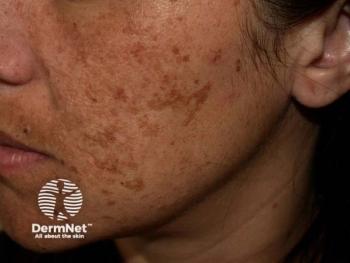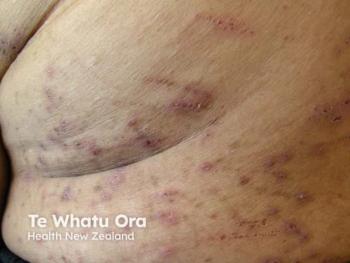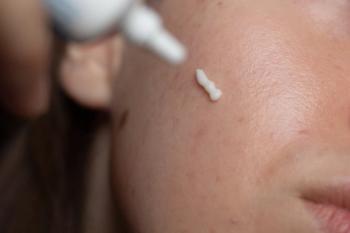
World Skin Health Day: Solving Dermatologic Disparity and Leading Educational Outreach in Remote Communities
Vinna Crisostomo, MD, leads vital skin health initiatives in Palawan, addressing access and education challenges for underserved communities on World Skin Health Day.
Crisostomo shared her insights into the planning and execution of this ambitious initiative, from overcoming logistical challenges to fostering a deeper appreciation for the complex realities of delivering specialized care in isolated communities. She also highlights the critical role of educating local health workers, addressing systemic issues, and shifting the cultural perspective on skin health, from a matter of aesthetics to an essential component of overall well-being.
Q&A
DT: Can you give an overview of your involvement with this year’s ILDS grant project for World Skin Health Day?
Crisostomo: I'm the project coordinator, but Dr. Jamora helped a lot in the planning and inception of the whole project. She helped me in conceptualizing it. So we already had some ideas in mind when we submitted for the grant application for World Skin Health Day. So I have an ongoing project with the provincial health office of Palawan, where we wanted to increase access to dermatologic care and skin health in some remote communities in the province. So initially, the 3 project sites were the target communities with indigenous peoples. And then for this specific project, we targeted 1 geographically isolated and disadvantaged area with indigenous communities, Linapacan, for skin education, access to dermatological care, consultation, and surgical admission. I worked before as a rural health physician and then I transitioned to becoming one of the medical officers in the province, so I worked with the local government previously, and that's how we chose this site.
DT: Can you describe the inspiration behind launching these outreach clinics and education initiatives? What specific skin health challenges are the most pressing in these regions?
Crisostomo: When we were conceptualizing this project, we were thinking about the disparity in access to dermatological care. In fact, in the Philippines, we have around 1300 dermatologists. 50% of the dermatologists are in Manila and then the rest are scattered in all the other provinces in the Philippines. And Palawan actually has only 4 dermatologists who are actually stationed there and providing care. And Linapacan is so far from the main island that it will take them 4 hours by boat ride. And then there's the land travel. So it's really far for these communities to reach specialized skin care and skin health. There are 2 doctors actually in the municipality: the municipal health officer, and another rural health physician who works with him. And there's no access to surgical care, so they are the main provider for basic surgery, child care, and maternal care. I think for some of our patients, it's the first time they've seen a dermatologist.
So we brought in the surgical dermatologist from our subspecialty core group. So we have 3 or 4 surgeons on board, and then the rest of the team also provides medical care and consultations. So we brought in everything, from the alcohol to the surgical equipment...oral medications, topical medication, antibiotics, pain relievers, antihistamines, we brought in everything. So that's one logistical problem that we had. But we try to bring in as much as possible. And then we also thought about another component, which is to educate. So we thought about educating or improving the skills of the municipal health officer. We also trained them. Dr. Jamora taught basic surgery to the municipal health officer, and we also targeted the health workers because in these kinds of municipalities, the community volunteers really play a great part in educating and stopping misinformation. We also tried to give them some lectures on skin health, leprosy, occupational dermatology, environmental dermatology, and common skin diseases. So basically, we wanted to educate to promote skin health and then to increase access. So that's how we conceptualize everything.
DT: What are some of the biggest challenges that you've encountered during this project thus far, and how did you address them?
Crisostomo: The first problem is logistical, because we have to bring in everything, even the doctors. Secondly, when we were planning this, even before the application, we were thinking, "Are we sure that this is going to happen?" Because June starts typhoon season in the Philippines. So initially, we talked about this with ILDS and asked what's going to happen if we could not get there. We were also thinking that some patients will not come in, because, as we said, some of them are really far, 3 hours by boat from their barangay, going to the main island. Some of our patients left their barangay as early as 5 am, and then the barangay captains provided some transportation for them. So we were able to have the 55 patients that we actually targeted.
Then another challenge is wondering if they really want to join us because it's their first time coming in and seeing a dermatologist. For some of them, it was maybe their first surgery ever, or they were the first person who had gotten surgery in their family. Fortunately, the local government was very helpful. The Municipal Health Office team provided enough information and informed the patients and the communities to come in on that day. And they really didn't understand what it's all about, until someone returned and then told them what really happened, what we provided. How are the doctors? How are the people providing care? So usually on the second day, more people will come in, because they have already seen some of their neighbors who were consulted. So we already thought about those types of problems ahead, but fortunately, it was a smooth implementation.
DT: How do you hope the initiative will influence both long-term dermatologic care and awareness in these underserved regions in the Philippines? What else do you hope clinicians would like to learn or gain from hearing about this initiative?
Crisostomo: Like I said, this is the first time I reached this particular community. I did not imagine it to be so far away from the mainland, actually. And for me, it really opened up my mind and my appreciation of the hard work of the doctors and health workers in that area. Also, I now have a deeper understanding of how our patients are. It's not easy for them to get the care they need. Maybe it's because of geography, maybe because they don't have the money to go to the facility. Maybe because the doctors are not there, the dermatologists are not present in their area, so they cannot access. There are so many problems and so many reasons behind it. But I now have a deeper understanding as to why they seek care at a later time, and it’s because of all of those factors. I think the dermatologists who were with me also have a deeper understanding of that and how difficult for patients to really access care.
As a doctor, a public health worker, and a global health dermatologist, I think now it has opened up my mind to work more so that there will be some change in the system itself, so that the people can have more access. Maybe more funding is the problem, but at least we can lobby more as specialists on how to improve the overall care of the isolated areas. That's how it impacted me, and hopefully it influenced the 130+ barangay health workers who were present during the lectures. I hope they learn something and that they realize the importance of skin health, that skin is not just about beauty. Because when we talk about skin, usually it's just about beauty in the Philippines and we just want to have fairer skin. So I hope they appreciate now the value of skin and the overall health of the person. During these consultations, it's not just asking us about something about beauty or skin whitening. As dermatologists here, we always have that either way from the patients. But hopefully, we were able to impart the important message that skin health is actually an important aspect of their overall health, the way they take care of their heart or lungs. So I hope that's how we influence the community.
[This transcript has been edited for length and clarity]
Newsletter
Like what you’re reading? Subscribe to Dermatology Times for weekly updates on therapies, innovations, and real-world practice tips.


















